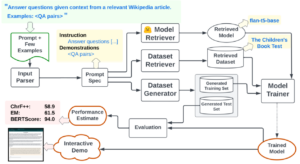Principles First: Integrating Responsible AI into Your Research
Responsible AI is a framework that emphasizes the development of AI technologies in a way that respects ethical principles, societal norms, and individual rights. Here’s a beginner’s guide for AI researchers looking to integrate responsible AI principles into their work.
Understand the Principles of Responsible AI
The first step is to familiarize yourself with the core principles of responsible AI. These typically include fairness, transparency, accountability, privacy, and security. Understanding these principles will help you to consider the broader implications of your work and ensure that your research contributes positively to society.
- Fairness: AI systems should be free from biases and should not discriminate against individuals or groups.
- Transparency: The workings of AI systems should be open and understandable to users and stakeholders.
- Accountability: AI researchers and developers should be accountable for how their AI systems operate.
- Privacy: AI systems must respect and protect individuals’ privacy.
- Security: AI systems should be secure against unauthorized access and malicious use.
Engage with Interdisciplinary Research
AI research does not exist in a vacuum; it intersects with numerous fields such as ethics, law, sociology, and psychology. Engaging with interdisciplinary research can provide valuable insights into the social and ethical implications of AI, helping you to design technologies that are not only innovative but also socially responsible. Collaborate with experts from these fields to gain a broader perspective on the impact of your work.
Adopt an Ethical Framework
Developing or adopting an ethical framework for your research can guide your decision-making process and help ensure that your work aligns with responsible AI principles. This could involve conducting ethical reviews of your projects, considering the potential societal impact of your research, and implementing guidelines for ethical AI development.
Prioritize Privacy and Security
Given the increasing amount of personal data being processed by AI systems, prioritizing privacy and security is essential. This means implementing robust data protection measures, ensuring data anonymization where possible, and developing AI systems that are resilient to attacks and unauthorized access.
Foster Transparency and Explainability
Work towards making your AI systems as transparent and explainable as possible. This involves developing techniques that allow others to understand how your AI models make decisions, which can help build trust and facilitate the identification and correction of biases.
Engage with Stakeholders
Engage with a broad range of stakeholders, including those who may be affected by your AI systems, to gather diverse perspectives and understand potential societal impacts. This can help identify unforeseen ethical issues and ensure that your research benefits all sections of society.
Continuous Learning and Adaptation
The field of AI and the societal context in which it operates are constantly evolving. Stay informed about the latest developments in responsible AI, including new ethical guidelines, regulatory changes, and societal expectations. Be prepared to adapt your research practices accordingly.
Conclusion
Integrating responsible AI principles into your research is not just about mitigating risks; it’s about leveraging AI to create a positive impact on society. By prioritizing ethics, engaging with interdisciplinary research, and fostering transparency and stakeholder engagement, you can contribute to the development of AI technologies that are not only advanced but also aligned with the greater good. The journey of becoming a responsible AI researcher is ongoing and requires a commitment to continuous learning and adaptation.
Here are some interesting papers that can help you ponder:
- Hagendorff, Thilo. “The ethics of AI ethics: An evaluation of guidelines.” Minds and machines 30.1 (2020): 99-120.
- Selbst, Andrew D., et al. “Fairness and abstraction in sociotechnical systems.” Proceedings of the conference on fairness, accountability, and transparency. 2019.
- Burrell, Jenna. “How the machine ‘thinks’: Understanding opacity in machine learning algorithms.” Big data & society 3.1 (2016): 2053951715622512.
- Why a Right to Explanation of Automated Decision-Making Does Not Exist in the General Data Protection Regulation
- Papernot, Nicolas, et al. “Sok: Security and privacy in machine learning.” 2018 IEEE European Symposium on Security and Privacy (EuroS&P). IEEE, 2018.

